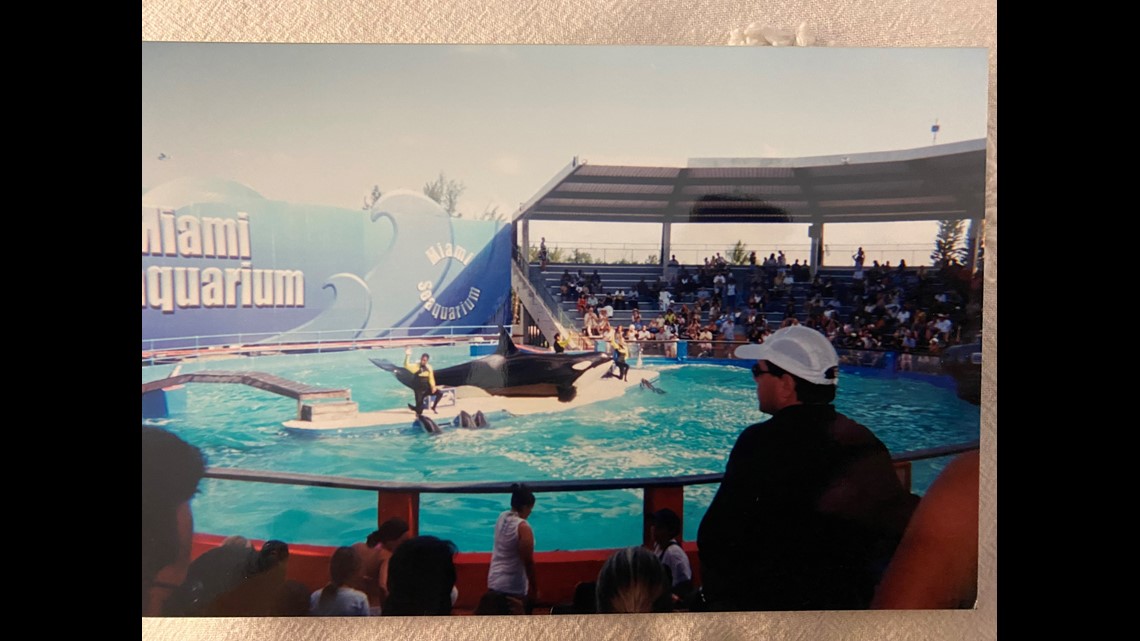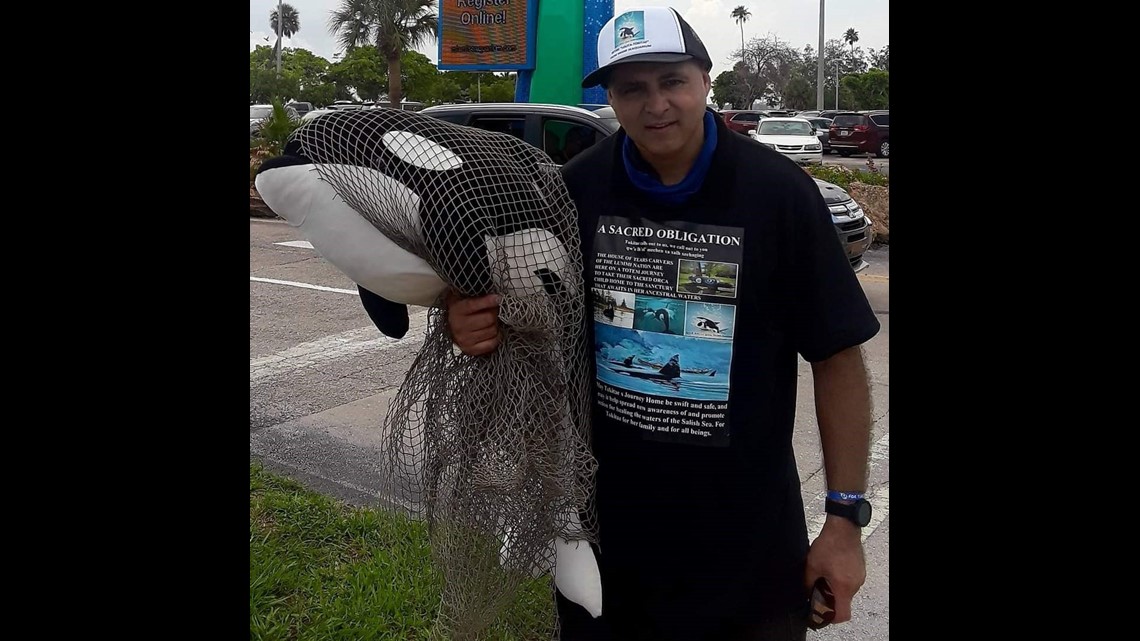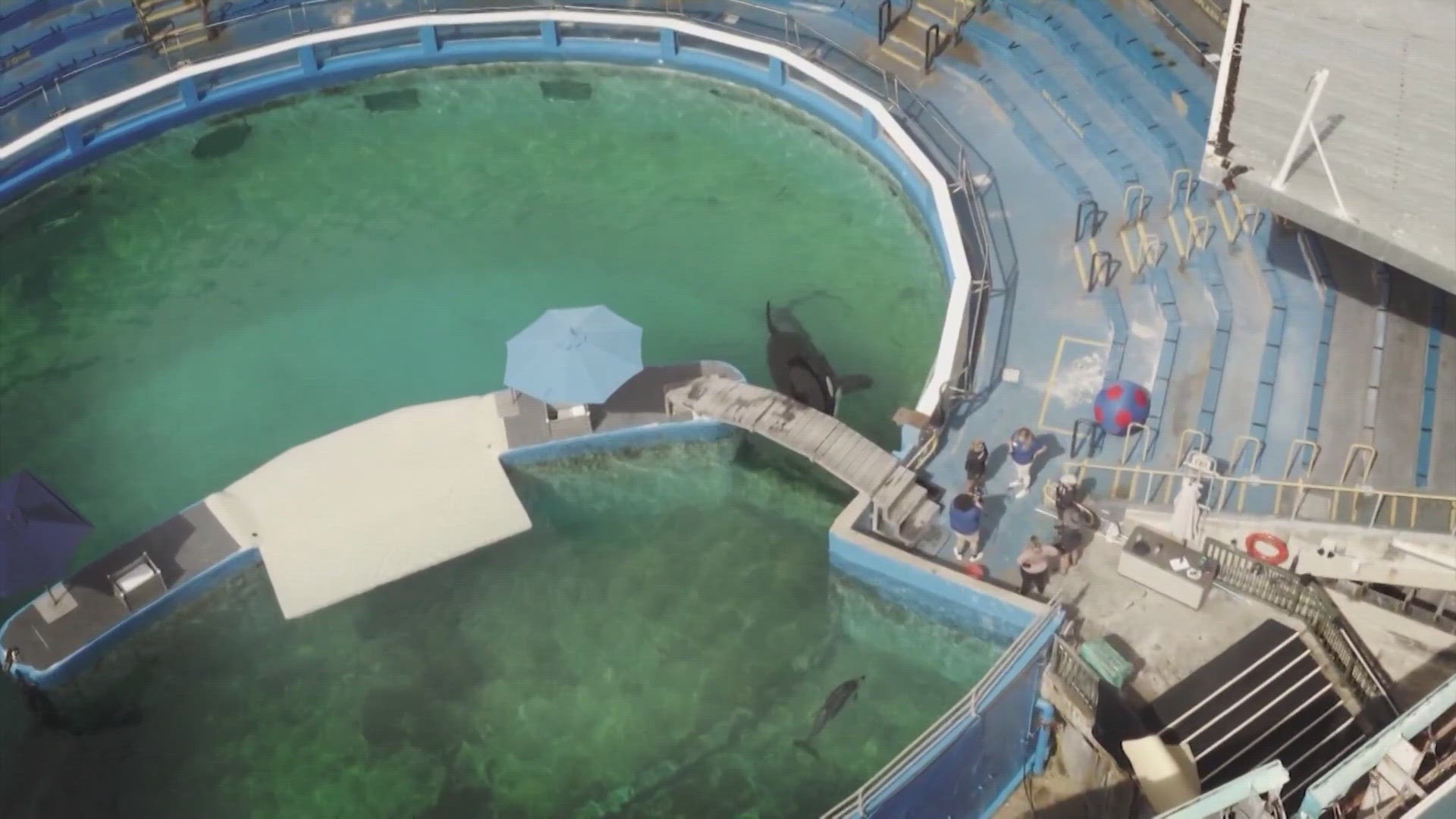MIAMI — For over half a century, families like Sylvia Grimaldi’s flocked to the Miami Seaquarium to get a glimpse of their star attraction: Lolita the killer whale.
“When you've lived in Miami, your entire life you know there is an orca there named Lolita," Grimaldi said. "She's sort of like part of the community."


Now we know her as Tokitae or Toki. She is a 57-year-old Southern Resident orca violently captured from the Puget Sound in 1970.
“They bring you (to the seaquarium) when you're a little kid, then you bring your children until one day, you know, you're lighted and you're like, wait a second, it's all wrong,” Grimaldi said.
Over the past decade, awareness about Tokitae’s deteriorating living conditions bubbled to the surface in Miami- revealing a sad truth behind the star of many happy home movies.
“What you don't know is… the conditions this beautiful Lolita has lived in for so many years, there is no home, there's no timeout, there is no ‘let me get some rest and relax,’" Grimaldi said. "She can’t even stay away or hide from the scorching sun in South Florida."
In 2015, Grimaldi connected with animal rights activist Alejandro Ariel Dintino while protesting outside the Seaquarium.


“I feel so sad, because when you see how she lives, you know, the tank is three times her body size," Dintino said. "You know, she can't swim. She can’t do anything."
Toki’s medical records paint a dire picture of life inside the Seaquarium with Toki living in dirty water, being fed rotten fish and forced to perform for crowds despite injuries.
“Her story broke my heart," Dintino said. "So from that moment, I, I thought I had to do something."
While the protests went on for several years, it wasn’t until 2018 that the momentum behind the fight to free Toki got a huge boost thanks to the Lummi Nation. The Lhaq'temish people, also known as the Lummi Nation, have a history with orcas dating back thousands of years. According to Lummi Elder Raynell Morris, orcas are considered family beneath the waves.


“I started supporting them. And I can't believe just four years later, we are close to achieving this goal," Dintino said. "We are very, very close. This will change the history, you know, it is unbelievable."
A historic announcement
On March 30, 2023, Tokitae’s new corporate owners- the Dolphin company- made history by signing a pledge agreeing to the orca’s return to Washington waters.
During the announcement, Dolphin Company CEO Eduardo Albor shared how prior to purchasing the Seaquarium, one of his daughters became emotional while watching Tokitae perform in her small tank, and left the show in tears. Albor says his daughter made him promise that if he took over ownership of the Seaquarium, he would do something about the Orca’s living situation.
“More than just moving Lolita to a place where she will be better, she will become a symbol for us and the future generations,” said Albor.
“Are there risks at all? Of course, there are some risks. There’s risks today for any one of us, wherever we are," said Charles Vinich, with the Whale Sanctuary Project. "But is this an opportunity to bring her home? Yes it is."
The journey home
The plan to return Tokitae to Washington was developed under the guidance of Vinick and the whale sanctuary project. Here’s how it could work.
First, Tokitae would be coaxed into a custom-made stretcher and lifted out of her aquarium with a crane, into a small container filled with ice water.
From there Tokitae would go onto a cargo plane for a six-hour flight to the Bellingham airport.
Next, Tokitae will be loaded onto a barge to transport her to ancestral waters in the Salish Sea.
There she’ll be put into an underwater sea pen at a private location.
She’ll receive round-the-clock medical care, security and feedings. She’s expected to live in that sea pen for the rest of her life.
“She is active, she is responsive, she’s just full of life, and she has demonstrated a will to live that frankly, almost no other whale has ever demonstrated," Vinick said. "Her veterinarians today have said she’s healthy enough for a transport, she can certainly be in a new environment."
Vinick’s team is already working to secure approval for Toki’s release from several federal authorities. If approved- those helping fund the move say she could be home by the end of 2023, but only if she remains in good health.
“We have all of this lifeforce gathered together to bring her home- and it’s a tremendous opportunity that we have to work as expeditiously as possible to bring it to fruition,” Vinick said.
Family reunion possible
Some researchers believe Tokitae could even be reunited with her mother.
Many scientists think her mom is still alive and a member of the L pod, identified as L-25, or Ocean Sun. Right now there's no evidence that definitively proves she's Tokitae’s mom, but Ocean Sun is the right age- about 95 years old.
Ocean Sun is the oldest living whale in the Southern Resident community.
Toki now
When the Dolphin company purchased the Seaquarium in 2022, they were required by the USDA to retire Tokitae from performing as a condition of the sale. Also around that time, Miami Dade County deemed Tokitae’s stadium as an "unsafe structure" due to corrosion and disrepair.
Tokitae’s stadium and aquarium are covered with fencing to keep the public out. Yet Grimaldi and her son often come back to the Seaquarium.
Every Sunday for several years, they would stand outside on the sidewalk, shouting messages of love and support to the orca. With Tokitae’s release on the horizon, those visits have become less frequent, but no less powerful.
“She's a Native sister, she's a Salish Sea daughter," Grimaldi said. "She represents everything Native and everything pure. There's no 'What if' or 'What if something happens along the way.' She's going home, period."
The price tag
The cost of Tokitae’s transport and the construction of her sea pen will be covered by Indianapolis Colts owner, Jim Irsay. Some estimate those costs could be upward of $20 million.
In 2018, the Orca Network put together a cost analysis of returning Tokitae to the Puget Sound. Here are some of the expenses they anticipate:
- Construction of transport cradle and stretcher: up to $58,000
- Government veterinary examinations prior to travel: $40,000-50,000
- Crane and operator at Seaquarium: $75,000-100,000
- 12 divers to help in Miami and WA: $48,000
- Police and security services during transport: $10,000 - $15,000
- Air transport is estimated at up to $100,000 (if not donated)
- Truck transport services for the Miami end and in Bellingham: $30,000
- Tug/Barge from Bellingham to sea pen: $30,000-$50,000
- Construction and installation of sea pen: $200,000
- Daily diet of 150-200 pounds of Chinook Salmon- up to $1,600 per day, $584,000 per year
- Veterinary services would be approximately $1 million
- Sea pen security: $10,000-15,000 per month

